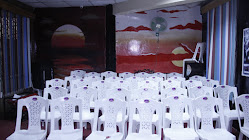HOW SOMALIS CAME TO EASTLEIGH
In the past decade, there has
been an increase in construction, a boom in retail business and
telecommunication operations in Eastleigh. Daily prayers from numerous mosques
fill the air in this area, an area that never sleeps on the Eastern side of
Nairobi Cen-tral District.
Eastleigh is well networked to the rest of the
world via satellite and in-formal services called hawala which facilitate the
rapid dispatch of cash to the Somali diaspora throughout the world. So, what is
the origin of Eastleigh?
Eastleigh was originally an open savanna
grassland where wild animals roamed before Somalis and other Africans were
pushed to the East of Nairobi by the White settlers. The gradual entry of
Somalis into Nairobi happened earlier on under the patronage of the British.
The first batch of Somalis came to Nairobi as
escorts and guards for the British Empire and builders like Lord Delamare and
Lord Lugard. A few others came to work on the Kenya- Uganda railway. Those with
Lord Dalamare ensured that the hunter was well guarded and when he faced
danger, the Somalis saved his life. This cemented their relationship and years
later in Nairobi, Delamare and other settlers fought to secure the interest of
Somalis in Nairobi whenever they were threatened.
Somalis went about their business in Nairobi
with their heads held high. Because of this service to the British, many
considered themselves in a
higher class than other Africans.
Somalis lived in Kileleshwa, very close to the
Europeans near what is to-day Museum Hill. But when trouble broke out in
Nairobi when the city was still developing, many of the Somalis were pushed to
Eastleigh.
Plaque broke out in the Indian Bazaar,
following which the famous 1914 Simpson report recommended drastic measures
that would segregate the races that had congregated in Nairobi on different
missions. Asians were held in higher racial regard than Africans. In their
quest for status in Nairobi, Somalis wanted to remain with the Asians, arguing
that they were aliens in Kenya and had lived in Asia before moving to Kenya.
The Somali villages within the protected
European leasehold area con-sisted of 126 houses, 64 owned by 57 people. In
1916, Governor Belfield sent a telegram that initiated the Somalis journey to
Eastleigh “Not long ago, the Medical authorities discovered nearly 12 cases of
small-pox con-cealed in the village”, said the telegraph in part. Unlike other
settlers, Gov-ernor Belfield considered Somalis to be settlers who “had no
claim what-soever to compensation or assistance in removing their effects’
It was the governor’s wish that the Somalis be
moved to to Mbagathi on the upper side of Nairobi, a decision they seriously
resisted at a meeting held on the Ngara plains on December 15th to 17th 1916.
They cited lack of firewood, the long distance
to town centre for busi-ness and the fact that they had spent their own money
to supply water and electricity to the place they were living. When the
Secretary of State finally gave his verdict, the Somalis had to move. But it
was this verdict that kept Somalis united in their struggle to remain in
Nairobi, something that is evident even today.
Feeling betrayed by the people they had
protected, the community grad-ually moved toward what is today Kirinyaga Road,
initially occupied by Africans before they were pushed to Eastleigh. When the
Somalis moved there around 1920, it was called kampi ya Somali (Somali camp)
and it was basically bushy. It was not until the 1980’s when the name changed
to Eastleigh after the arrival of the Royal Air Force.
Most of the military stationed there came from
a town called Eastleigh in Hampshire, England. Today’s residents many of whom
are Somalis are trying to organize the place they have called home for years. Watch
th start and boom of eastleigh:
The documentary will include the history of
Eastleigh and
interviews of selected community leaders and entrepreneurs for success
stories rising and growing youth talents, interviewing selected community
leaders and entrepreneurs for a success stories or as role model
incorporated in the documentary which has be conducted to disseminate the
positive success of Kamukunji Sub-County in order to clears the bad
thoughts of some elements viewing Eastleigh as home of insecurity or
terror that once branded Eastleigh as home of terrorism.Eastleihgwood production team have interviewed the political leaders and business people on the
beginning of the estate, the boom of business and the challenges that
local community faces.
interviews of selected community leaders and entrepreneurs for success
stories rising and growing youth talents, interviewing selected community
leaders and entrepreneurs for a success stories or as role model
incorporated in the documentary which has be conducted to disseminate the
positive success of Kamukunji Sub-County in order to clears the bad
thoughts of some elements viewing Eastleigh as home of insecurity or
terror that once branded Eastleigh as home of terrorism.Eastleihgwood production team have interviewed the political leaders and business people on the
beginning of the estate, the boom of business and the challenges that
local community faces.
Subscribe to:
Post Comments
(
Atom
)


















No comments :
Post a Comment